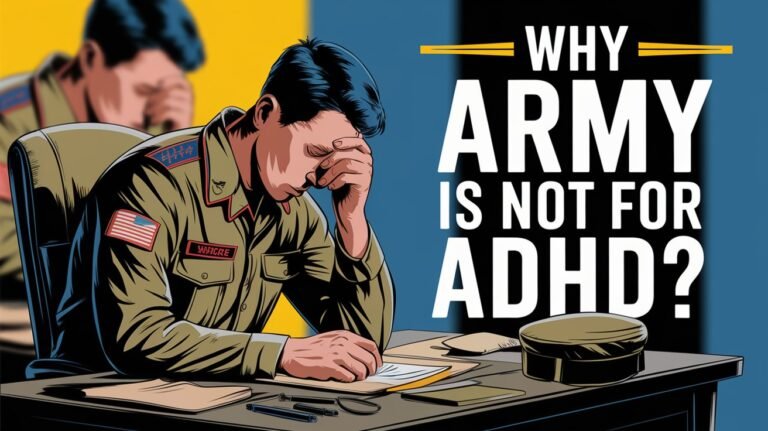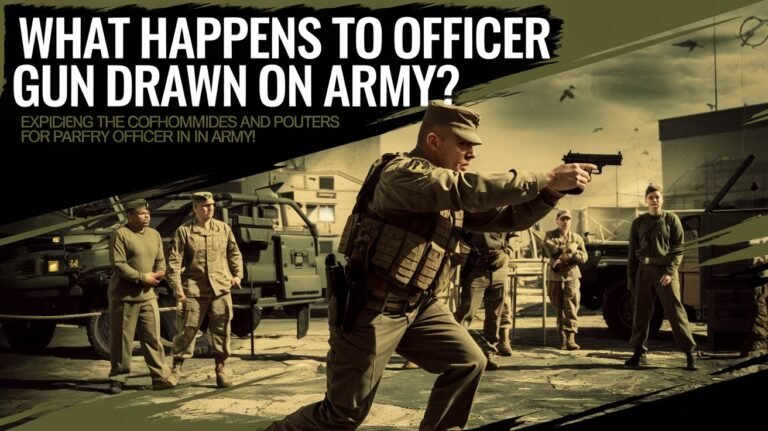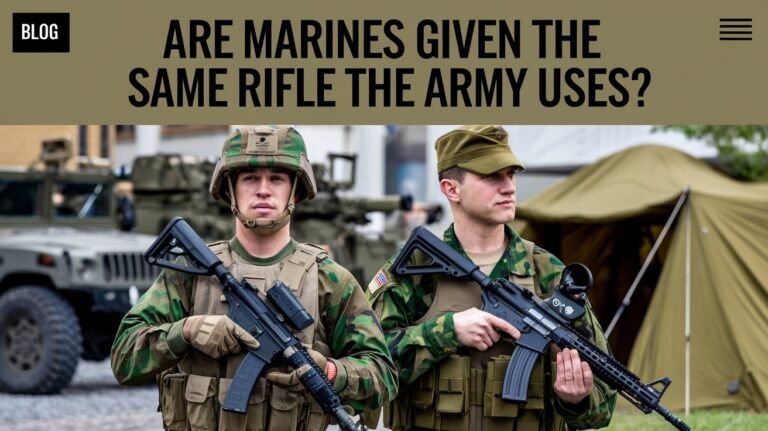What Is the Highest Rank in the Army: Explained Clearly

Exploring the U.S. Army’s hierarchy can be challenging. Yet, knowing the top ranks is key for anyone interested in the military. Ever curious about the Army’s highest leadership position? Let’s dive into the world of the Army’s elite leaders and discover what makes them stand out.
General of the Army: Five-Star Excellence
The rank of General of the Army is the highest in the U.S. Army. It has a five-star insignia. This rank was created during World War II for the most exceptional leaders.
Historical Five-Star Generals
Only nine people have been called General of the Army. They include Dwight D. Eisenhower and Douglas MacArthur. These leaders played key roles in the U.S. military’s success.
Requirements for Five-Star Rank
To become General of the Army, one must show great strategic vision and command. They must lead the Army through tough times. The five-star insignia shows the highest military honor.
Special Wartime Designation
The General of the Army rank is for wartime only. But the U.S. Army can bring it back if needed. Today, the highest rank is four-star General, with about 15 officers leading the military.
What Is the Highest Rank in the Army Today
The highest rank in the U.S. Army today is the four-star General (O-10). This top spot is held by the Army Chief of Staff. They are part of the Joint Chiefs of Staff. Four-star generals lead major army parts and handle big tasks in the senior military leadership.
Being a four-star general is the highest in the Army’s officer corps. These officers have shown great leadership, strategic thinking, and can manage big military tasks. They oversee the Army’s mission, from training soldiers to planning big military actions.
The four-star general is the Army’s most senior officer. They are only outranked by the five-star General of the Army, a rare rank used in U.S. history. The last five-star General was Omar Bradley, appointed in 1950 during the Korean War.
Army General Officer Ranks Explained
The United States Army has a clear hierarchy of general officer ranks. These ranks go from Brigadier General (O-7) to General (O-10). There are also five-star ranks for wartime. Knowing what each rank does helps us understand the Army’s leadership and command structure.
Brigadier General (O-7)
Brigadier Generals lead units with 3,000 to 5,000 soldiers. They can also be second-in-command to the division commander.
Major General (O-8)
Major Generals oversee units with 10,000 to 15,000 soldiers. They manage the strategy and operations of big military groups.
Lieutenant General (O-9)
Lieutenant Generals lead units with 20,000 to 45,000 soldiers. They are in charge of complex military operations in their area.
General (O-10)
Generals are the top officers in the Army. They lead army components or hold key Pentagon jobs. With over 30 years of service, they make critical strategic decisions.
Role of Four-Star Generals
In the U.S. Army, four-star generals are key in making military plans, leading big commands, and giving advice on national security. They are given big tasks that greatly affect the country’s defense and its role in the world.
These generals often lead major army parts or hold top spots in the Department of Defense. They plan strategies, manage resources, and make important decisions. These actions shape military actions and the army’s strength.
History shows there have been 260 four-star generals in the U.S. Army. They came from different ways, like the U.S. Military Academy, ROTC, and direct commission. Most, 246, got the rank while still in service. Others were promoted after they retired or posthumously.
| Path of Entry | Number of Four-Star Generals |
|---|---|
| U.S. Military Academy | 163 |
| ROTC at a Civilian University | 54 |
| Officer Candidate School | 15 |
| Direct Commission | 13 |
| Other Paths | 15 |
Some famous four-star generals include George Washington, Ulysses S. Grant, and Dwight D. Eisenhower. These leaders have greatly influenced the U.S. military’s history. They held important positions during their time as four-star generals.
Command Structure at Division Level
In the U.S. Army, divisions are led by Major Generals (O-8). They manage operations with 10,000 to 16,000 soldiers. These officers lead strategically, manage resources, and work with other units and civilians.
Division Commander Responsibilities
Division commanders are key in the Army’s operations. They direct brigades and support groups. They make sure complex plans work and battles are fought well.
They handle resources, people, and work with others. This includes the military and civilians.
Strategic Leadership Elements
- Creating and carrying out strategic plans to meet goals
- Deciding how to use resources for division operations
- Working together with other units and commands
- Guiding brigade and battalion commanders
Operational Authority
Division commanders have a lot of power to direct their units. They can move and act brigades and support groups. This helps meet tactical and operational goals.
The division command structure is vital for the Army’s success. It ensures big battles and campaigns are well-coordinated. The leadership and power of division commanders are crucial for the Army’s success at the tactical level.
Corps Leadership and Organization
The army corps is a vital part of the U.S. Army’s structure. It is led by Lieutenant Generals (O-9) and has 20,000 to 40,000 soldiers. These corps are key in leading large-scale military operations. They help coordinate and support combat efforts and work with other countries too.
The U.S. Army has three active corps. Each corps has its headquarters in the Continental United States. They are important for the army’s logistics and operations, making sure big missions are carried out smoothly.
At the corps level, the focus is on operational and strategic leadership. Army corps manage the efforts of many divisions and brigades. They handle military logistics and make large-scale operations possible.
The corps commander, a Lieutenant General, plans and executes operations. They make important decisions that shape the military strategy. They work with other leaders to ensure forces are deployed and sustained well, helping the army meet its goals.
Army Senior Leadership Career Path
To become a senior leader in the U.S. Army, you need a lot of experience, education, and command roles. Officers start at the bottom and work their way up. They go through advanced schools and hold different leadership positions to reach the top.
Required Experience
Getting to senior leadership in the Army means having a wide range of experiences. Officers need to show they can handle combat, joint assignments, and strategic planning. These experiences help them make good tactical, operational, and strategic decisions.
Educational Requirements
- Advanced degrees, like master’s or doctoral programs, are often needed for senior roles.
- Going to top service colleges, like the U.S. Army War College, is key for senior officers.
- Keeping up with professional development, including training and certifications, is important for aspiring leaders.
Command Assignments
Leading bigger units is a big part of becoming a senior leader. Officers must show they can lead, inspire, and manage complex operations. They start with small units and work their way up to division level, gaining the experience and credibility needed for the top ranks.
| Rank | Unit Size | Responsibilities |
|---|---|---|
| Platoon Leader (Lieutenant) | 16-44 Soldiers | Tactical-level leadership and operations |
| Company Commander (Captain) | 60-190 Soldiers | Tactical-level leadership and operations |
| Battalion Executive Officer (Major) | 300-800 Soldiers | Operational-level leadership and planning |
| Battalion Commander (Lieutenant Colonel) | 300-800 Soldiers | Operational-level leadership and command |
| Brigade Commander (Colonel) | 3,000-5,000 Soldiers | Operational-level leadership and command |
| Division Commander (General Officer) | 10,000-16,000 Soldiers | Strategic-level leadership and command |
Army Command Sergeant Major Position
Command Sergeant Major (CSM) is the top enlisted rank in the U.S. Army. It falls under the non-commissioned officer group. The CSM holds the pay grade of E-9. This rank was created in July 1967, with its duties fully defined by December 1975.
These senior leaders are chosen and trained to advise commanders on enlisted matters. This includes soldier welfare, readiness, and training.
The CSM insignia has changed over the years, starting in 1966. In the Vietnam War era, their role became more formalized in December 1966. Now, CSMs act as senior advisors to commanders. They oversee training, talk to soldiers and their families, and look after the enlisted force’s well-being.
The Command Sergeant Major is the 12th rank in the U.S. Army. New CSMs start with a basic pay of $6,370.50 a month, assuming over 10 years of experience. They get regular pay increases and might also get extra allowances and bonuses.
Most CSMs move up from the Sergeant Major rank. But, they can also be promoted from lower ranks if they show strong leadership and experience. CSMs and Sergeants Major share promotion rules, and their moves are seen as lateral promotions.
| Rank | Pay Grade | Responsibilities |
|---|---|---|
| Command Sergeant Major | E-9 | Senior enlisted advisor to unit commander Oversee soldier welfare, readiness, and training Promote enlisted leadership and development Communicate with soldiers and their families |
Warrant Officer Leadership Structure
The United States Armed Forces have a unique leadership system called the warrant officer system. Warrant officers, from Warrant Officer 1 (W-1) to Chief Warrant Officer 5 (W-5), are experts in technical fields. They act as a bridge between enlisted and commissioned officers.
These professionals bring crucial skills in areas like army aviation, intelligence, and logistics. Their deep technical knowledge and experience are key to the success of army aviation and other technical experts in the military.
Warrant officers are commissioned by the U.S. president. They take the same oath as other officers. Their specialized leadership roles allow them to command various units, vehicles, and aircraft. This greatly enhances the armed forces’ operational capabilities.
| Warrant Officer Rank | Commissioning Authority |
|---|---|
| Warrant Officer 1 (W-1) | Secretary of the respective service or the president |
| Chief Warrant Officer 2-5 (CW-2 to CW-5) | President of the United States |
History of warrant officers in the U.S. Armed Forces began in 1896. They started as civilian clerks in the Army. Over time, their ranks have grown, with significant increases during the Vietnam War and the introduction of the Warrant Officer Flight Program.
Today, warrant officers are crucial to the military. They offer technical experts and specialized leadership to support the U.S. Armed Forces’ mission.
Officer Ranks Progression System
The United States Army has a clear path for officers to grow. It has three main levels: Company Grade Officers, Field Grade Officers, and General Officers. Each step brings more duties and chances to develop as a leader.
Company Grade Officers
Company Grade Officers start at Second Lieutenant (O-1) and go up to Captain (O-3). They lead small teams, manage platoons and companies, and work in staff roles. Moving up depends on their performance, time in service, and what selection boards say.
Field Grade Officers
Majors (O-4), Lieutenant Colonels (O-5), and Colonels (O-6) handle bigger challenges. They lead battalions, work in key staff roles, and help shape the Army’s strategy. Getting to Field Grade is tough, needing strong leadership, technical skills, and the ability to take on more.
General Officers
At the top are the General Officers, including Brigadier Generals (O-7) to Generals (O-10). They oversee big units, guide the Army’s direction, and make important decisions. Being a General Officer shows top leadership, vision, and commitment to the Army.
Military Pay Grades and Rank Correlation
The military’s rank and pay systems are closely tied but not the same. Military pay grades help standardize pay across the armed forces. They use “E” for enlisted, “W” for warrant officers, and “O” for officers, followed by a number.
For instance, a Captain (O-3) and a Chief Warrant Officer 2 (W-2) might get the same pay grade. This ensures fair pay based on service years, skills, and leadership roles.
| Rank | Pay Grade | Monthly Base Pay (Example) |
|---|---|---|
| Commissioned Officer | O-1 (less than 2 years) | $2,792.40 |
| Commissioned Officer | O-10 (28 years) | $17,071.50 |
| Warrant Officer | W-5 (20 years) | $7,283.10 |
| Special Position (Chief of Staff) | N/A | $21,147.30 |
The military’s pay system aims to keep skilled people in various roles. As warfare changes, like in cyber warfare, the military might focus more on warrant officers. They also want to offer better career paths for enlisted to meet technical needs.
The rates for comparing military and civilian pay are set by matching military grades with civilian ones. This includes looking at proposed pay increases and civilian benefits.
Combat Leadership Authority
In the U.S. Army, leaders get more power as they move up in rank. Captains lead groups of 60 to 200 soldiers in battles. Lieutenant Colonels manage 300 to 1,000 soldiers and can act on their own in battles.
As leaders get higher ranks, their jobs get bigger. Colonels lead groups of 3,000 to 5,000 soldiers in big battles. Generals, from Brigadier General to General of the Army, guide large military efforts. They use their deep experience in battlefield command and tactical decision-making from years of military operations.
This leadership structure helps the Army plan and carry out big military operations. It goes from one soldier to a whole campaign. Each rank has the power to make quick decisions and lead with confidence.
Frequent Questions
What is the highest rank in the U.S. Army?
The highest rank in the U.S. Army is the five-star General of the Army. This rank is for wartime or special cases. The last five-star general alive was Omar Bradley, who passed away in 1981. Now, the top rank is the four-star General (O-10).
What are the requirements for the five-star General of the Army rank?
The five-star General of the Army rank was made for World War II. Only nine Americans have held it. You need to show great leadership and it must be wartime. This rank is not used today.
Who are some historical five-star generals?
Historical five-star generals include Dwight D. Eisenhower and Douglas MacArthur.
What is the highest active rank in the U.S. Army today?
Today, the highest rank in the U.S. Army is the four-star General (O-10). This includes the Army Chief of Staff, who is part of the Joint Chiefs of Staff. Four-star generals lead big army parts and have big jobs.
What are the different Army general officer ranks?
Army general officer ranks are Brigadier General (O-7), Major General (O-8), Lieutenant General (O-9), and General (O-10). Each rank has more responsibility and authority.
What are the roles and responsibilities of four-star Generals?
Four-star Generals are key in making military plans, leading big commands, and advising on security. They often lead theaters, major army parts, or top Defense Department jobs. They plan, manage resources, and make big decisions.
How are Army divisions typically commanded?
Army divisions are led by Major Generals (O-8). They have 10,000-16,000 soldiers and handle big operations. They lead, manage, and work with other units and civilians.
How are Army Corps led?
Army Corps are led by Lieutenant Generals (O-9) and have 20,000-40,000 soldiers. They support big operations and work with other countries. They help with big fights and international work.
What is the path to senior Army leadership?
To be a senior Army leader, you need lots of experience, education, and successful jobs. Officers go up through ranks, learn more, and take on different roles.
What is the highest enlisted rank in the Army?
The highest rank for enlisted is the Command Sergeant Major (E-9). They advise commanders on soldier issues, like welfare and training.
What is the role of Warrant Officers in the Army?
Warrant Officers are experts in certain areas. They have ranks from Warrant Officer 1 (W-1) to Chief Warrant Officer 5 (W-5). They offer special skills and leadership in fields like aviation and logistics.
How do Army officer ranks progress?
Officer ranks go from Company Grade (O-1 to O-3), Field Grade (O-4 to O-6), to General Officers (O-7 to O-10). Each step means more responsibility and leadership.
How do military pay grades relate to ranks?
Military pay grades match ranks but are not the same. They help standardize pay across services. Pay grades use “E” for enlisted, “W” for warrant, and “O” for officers, followed by a number.
How does combat leadership authority increase with rank and position?
Leadership in combat grows with rank and job. Captains lead 60-200 soldiers in fights. Lieutenant Colonels manage 300-1,000 soldiers and can fight alone. Colonels lead 3,000-5,000 soldiers in big fights. Generals give big plans and lead big campaigns.






